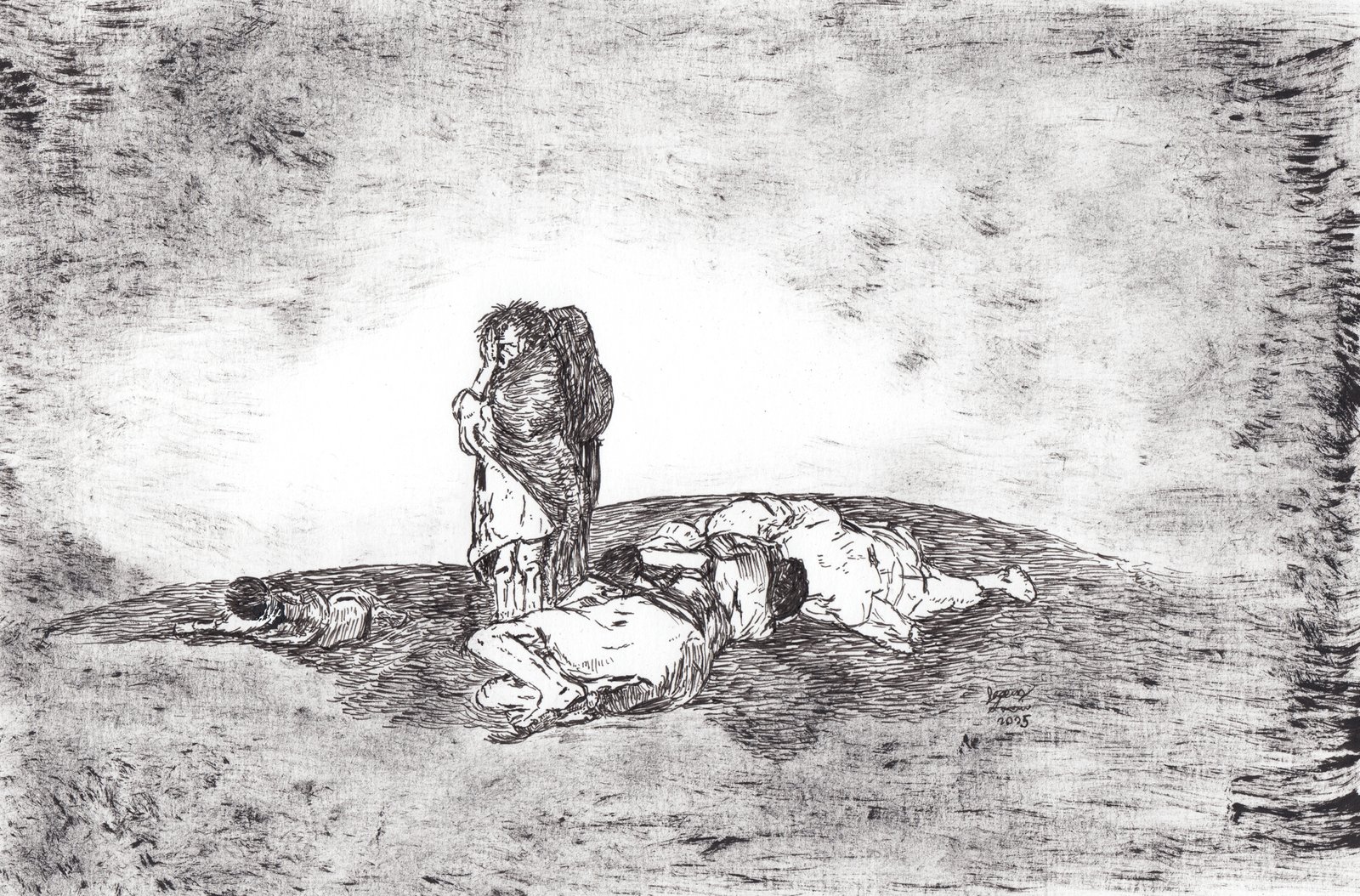It has been quite a busy summer season as I relocated very recently to a new place in the Nashville area. Between cleaning and shuffling furniture around, July and August have been more about logistics rather than quality time in the studio. However, I am grateful that I was able to spend some time studying the art of Francisco Goya. The Nash Illustrators and I took on a challenge this month titled, Let’s Get Inspired, and our goal was to look to our favorite artists for that inspiration to create. Goya was an easy choice for me.
The Disasters of War

The Disasters of War is a series of prints created by Goya in the early 1800s as a response to the conflict between the French and Spanish during that time. Goya was never a fan of war and it is clear in this print series how much he truly hates it.
I selected plate 60 of the print series to replicate. Titled No hay quien los socorra (translated to There is no one to help them), it is a brooding work showcasing a mourning figure standing on a hillside where three women lay dead from the effects of a widespread famine affecting the city of Madrid and the surrounding areas. It is haunting, powerful piece that really captured my attention as I was browsing the collection. Portions of the series each have a different thematic element and this one is reflective of the direct effects of warfare on the people experiencing it first-hand.
Goya’s work used an impressive array of printmaking techniques including etching, aquatint, and drypoint to render the strong lines among a backdrop of tone and darker areas. I think he effectively projected the somber atmosphere perfectly with this technique.
In my own version, not being a printmaker myself, I opted for a combination of technical pens and dry-brushed ink to capture a similar mood. In the past, I would often lean heavily on bold lines around my figures but here I was eager to try to create a piece where the lines are present but more subtle. The result is less cartoony. If I could redo the study again, I would likely go a bit lighter on the sky edges.
The Sleep of Reason Produces Monsters

Back in 2005 when I was still in my early college days, I first encountered Francisco Goya during an art history lecture. Once I saw the above print, The Sleep of Reason Produces Monsters, I knew I had found my favorite piece of art. It was an eye-opening moment and one that I won’t soon forget. Goya used similar techniques to that of Disasters of War seen here with this work in his Los Caprichos prints.
I felt the need to create my own version of the above print but my curly-haired self into the piece instead:

Maddening Influences was an ink drawing I highly enjoyed making back then based on the Goya print and I remember how much fun I had creating it. Seeing this drawing in my portfolio of old work is like opening a time capsule without the need for a letter to go along with it; I can recall all of the context around it.
Art’s power to recall history in such a profound way is one of the reasons why I enjoy this practice so much. A lot of the subjects and experiences shown in Goya’s work is still very relatable in the stories we hear today.
Which artists keep you inspired to create, observe, or learn from the past? Let me know via my Contact form or comment on social media.
Keep telling stories,
Jeremy

